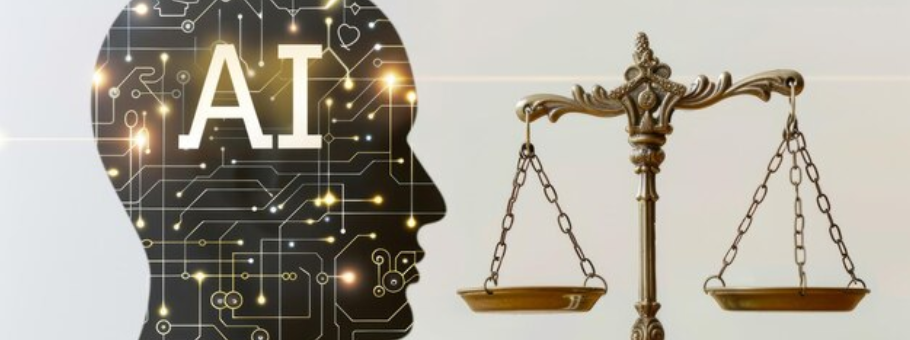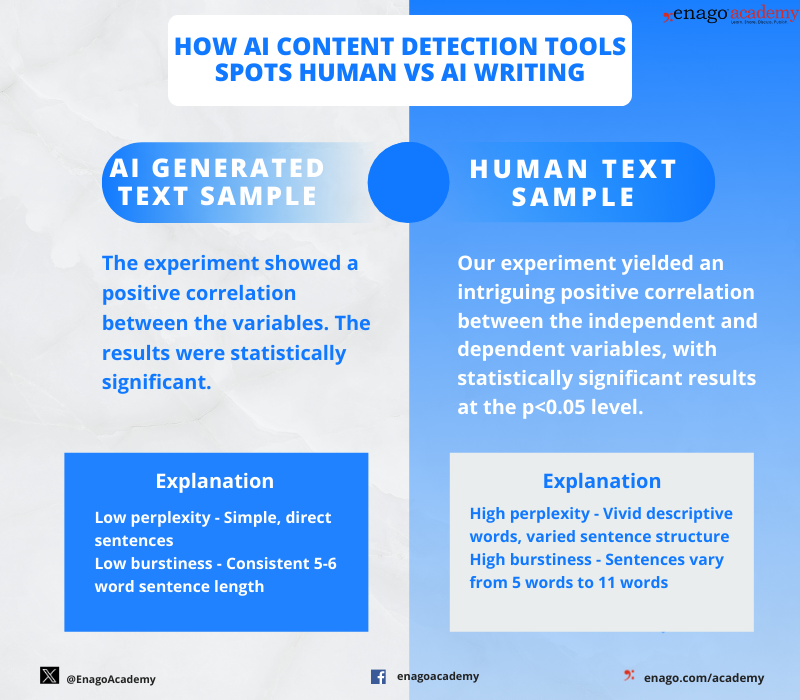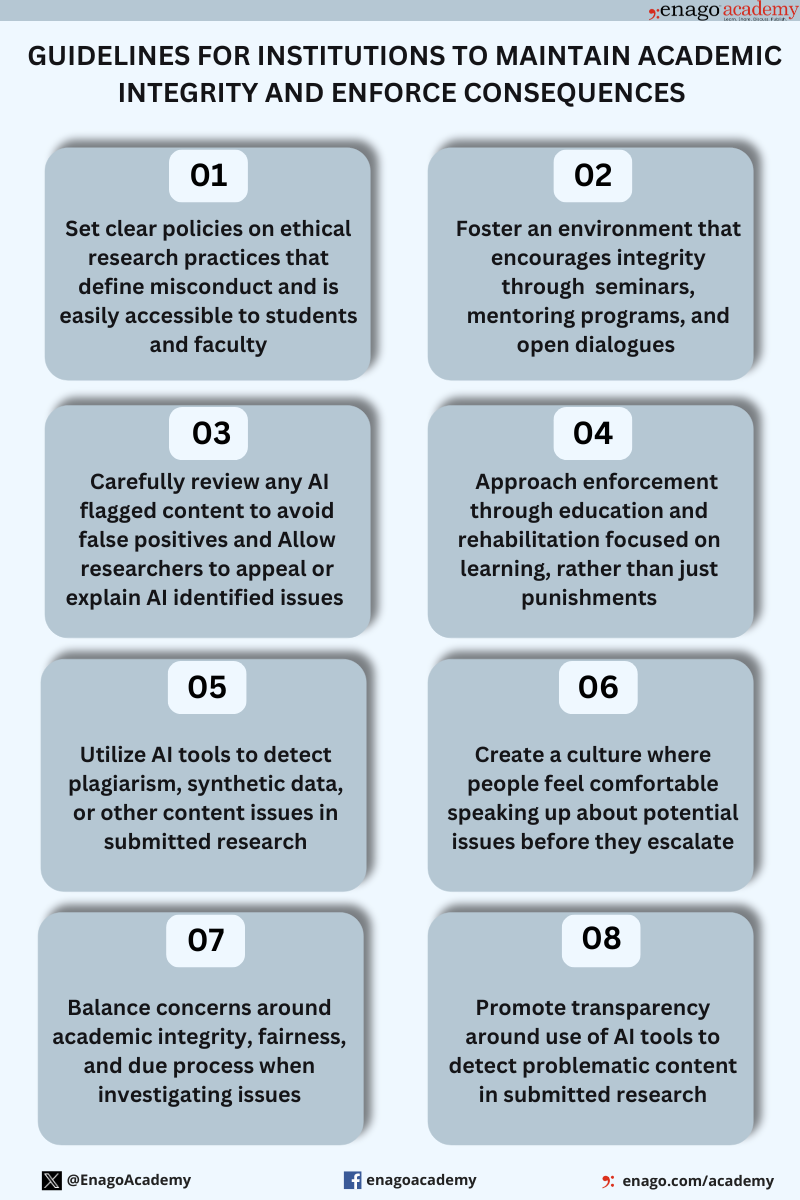Upholding Academic Integrity in the Age of AI: Challenges and solutions

In today’s academic landscape, one of the most pressing challenges is ensuring academic integrity. With the abundance of information available online, plagiarism and fabricated content have become major concerns. Recently, a research paper published in the journal Physica Scripta was retracted after it was found to contain a “Regenerate Response” command from ChatGPT. Such undisclosed use of generative tools fosters a pervasive atmosphere of scientific mistrust and compromises academic integrity.
The progress in generative AI tools makes acquiring information effortless. As a result, these AI models are gaining favor over traditional data collection methods. However, it is crucial to acknowledge the consequences of unchecked use of generative synthetic data. In the current environment, where fabricated and plagiarized research are increasingly reported, the absence of human oversight poses serious risks to academic integrity.
While the use of AI tools cannot be avoided, they must be approached responsibly to ensure ethical use that does not compromise scholarly standards. Rather than fearing AI, implementing reliable monitoring at personal and institutional levels and adhering to ethical guidelines can safeguard academic integrity. Failing to do so can result in plagiarism and the incorporation of synthetically generated data, which undermines the core principle of conducting original research with authentic data. However, emerging AI tools designed to automatically detect plagiarized or synthetic data content can also help address these concerns.
Impact of Dishonest Practices on Research Credibility
Academic misconduct by researchers can severely damage their own reputations as well as the standing of affiliated institutions. Practices such as data fabrication, plagiarism, and selective reporting undermines the integrity of the research process. It also stifles creativity and endanger critical thinking which are soul of scientific research. When such actions come to light, the trust on the scientific community is compromised. Maintaining credibility of scholarly work requires vigilance, transparency.
Challenges Posed by Information Access and AI Utilization
The internet provides valuable information access but also enables new forms of misconduct, further aggravated by the publish-or-perish pressure faced by new researchers. Meanwhile, AI is becoming integrated into research and publishing, providing benefits but also raising concerns. Over-reliance on AI writing tools allows researchers to take plagiarism and dishonest practices to new levels. Navigating this landscape without compromising ethics poses complex challenges, which includes:
1. Widespread availability of online sources increases temptation for plagiarism
2. Predatory online journals undermine research quality standards by publishing subpar or falsified studies
3. Relying solely on AI generative models to produce ‘original’ text without human oversight or attribution
4. Lack of policies around disclosure and oversight of AI use in research and publishing
Ways to Spot AI Generated Content
Identifying AI-generated content is crucial for maintaining the integrity and authenticity of academic writing. Following are some of the ways to detect machine-generated text:
1. Consistent Writing Style
While AI can mimic human writing styles, upon close inspection the writing often lacks nuance and exhibits repetitiveness not common in human writing. A human editor can identify overly formulaic and repetitive word patterns that signal AI-generated text.
2. Utilizing AI Detection Tools
This is one of the most sought after method for detecting AI-generated content. Such tools offer assistance in distinguishing between human-written and AI-generated content, providing a straightforward solution. Yet, human oversight remains pertinent as it is needed to verify the tool’s classification.
3. Verification of Citations
AI tools may generate fictional sources and citations that appear legitimate on the surface. Only human researchers can reliably verify that citations refer to real, applicable sources. Failing to do so may compromise academic integrity.
4. Contextual Analysis
Humans have a deeper understanding of context needed to identify AI-generated text. While such tests are grammatically correct, they lack the originality and contextual relevance that a human writer would provide. AI lacks the real-world knowledge and the content may seem generic.
What Is AI Content Detection Tool and How Does It Work
AI content detection tools utilize artificial intelligence to determine whether content was authored by humans or AI tools. It employs machine learning and natural language processing to analyze the structure and usage of words in text. Further, it compares new content against vast datasets of human-written texts to identify subtle differences indicative of AI generation.
It is one of the most effective strategy to detect AI content as it acts as a convenient and comprehensive method for probing the authenticity of academic work.
It identifies the AI generated content by majorly considering presence or absence of two factors: perplexity and burstiness. The lower they are, the greater the likelihood that the text was generated by AI. Let’s understand what these factors are:
1. Perplexity
It measures predictability and coherence. AI text has low perplexity as it aims to make logical sense. Human writing shows more perplexity through creativity and mistakes.
2. Burstiness
It assesses sentence structure and length variation. AI text uses consistent phrasing and average sentence length. This uniformity differs from human flourishes.

3 Best AI Content Detection Tools
Let’s delve into a comprehensive analysis of the three best AI content detection tools that can strategically address the challenges facing the world of academia.
1. Trinka AI Content Detector
- Serves as a comprehensive tool for AI content detection that covers a wide range of large language models (ChatGPT, Bing Chat, Claude, etc.)
- Utilizes advanced machine learning algorithms to identify AI-generated content, offering insights down to the sentence and phrase level
- Offers a quick overview score of the text generated by AI
- Has the sensitivity to even detect the paraphrased AI-generated text
2. Originality.AI
- Covers content generated by LLMs ChatGPT, Bing Chat, Claude, etc.
- Provides insights into content authenticity
- Offers easy to understand feedback on the scanned content
3. Crossplag AI Content Detector
- Utilizes advanced machine learning algorithms for text analysis and identification
- Provides an overall score but lacks plagiarism checking and individual section highlighting
- Performs better on longer texts, potentially less accurate with shorter samples
Maintaining Academic Integrity and Enforcing Consequences
Academic institutions play a crucial role in upholding ethics and integrity in research. However, enforcing consequences for misconduct must balance concerns around fairness and due process. AI tools can assist by detecting problematic content, but human judgement is still required when imposing consequences for possible breach. Institutions can take a multidimensional approach to encourage ethical practices while looking into possible violations.
With thoughtful guidelines, procedures, and cultural reinforcement, institutions can deter misconduct and maintain credibility through sound research ethics and integrity.
As AI tools become further integrated into academia, upholding integrity requires proactive development of ethical guidelines and oversight procedures. With responsible implementation, AI can assist rather than undermine credible research that advances public knowledge.
While emerging technologies provide new avenues for academic misconduct, integrity in research fundamentally depends on individual and institutional commitment to transparency and accountability. Through collaborative development of ethical standards and enforcement policies, the research community can leverage AI responsibly while safeguarding credibility.
Have you ever used AI tools for maintaining the integrity in your research? Feel free to share your perspectives on Enago Academy Open Platform.
Frequently Asked Questions
The best AI content detector depends on various factors such as the specific type of content you want to detect, the level of accuracy required, and your budget. Some popular AI content detectors include Trinka AI Content Detector, Originality.AI, and Crossplag AI Content Detector.
To determine if text is AI-generated, one should observe for patterns such as consistent writing style, analyze the contextual coherence, and employ specialized AI detection tools.
AI written content can be detected by using AI content detection tools. These tools primarily measure the presence of two factors, perplexity and burstiness, to identify AI-written content.
AI content detectors ensure authenticity, prevent plagiarism, and maintain content integrity, especially in academia. They identify if content is human or AI-generated, safeguarding academic integrity.









